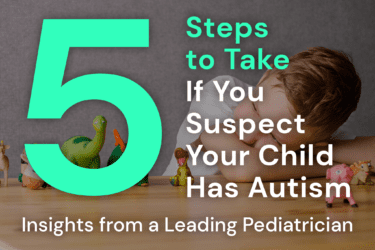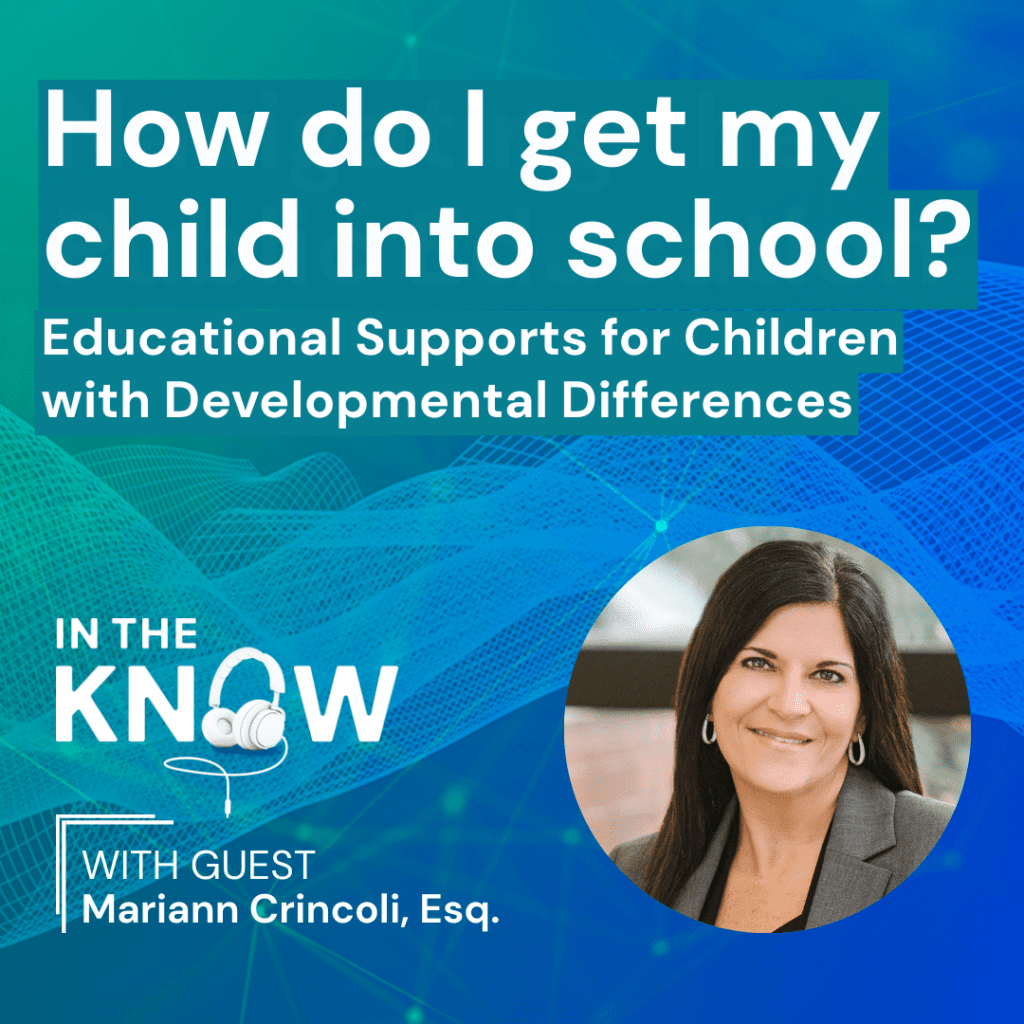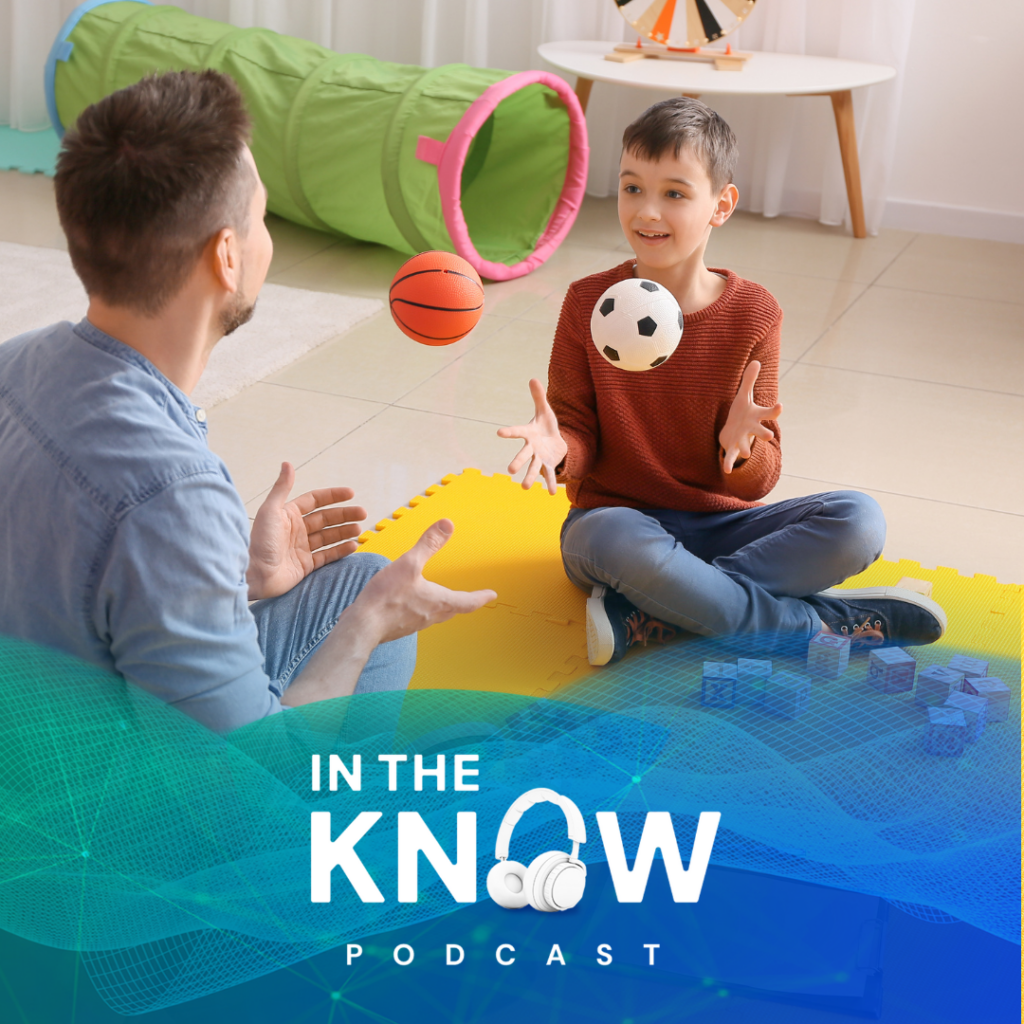 So, you’re worried about some of your child’s behaviors. Maybe they are not talking or communicating the way you would expect them to at this age, or they don’t seem to understand when you talk to them. Perhaps they get extremely frustrated and have tantrums that might seem normal in a younger child, but not at their current age.
So, you’re worried about some of your child’s behaviors. Maybe they are not talking or communicating the way you would expect them to at this age, or they don’t seem to understand when you talk to them. Perhaps they get extremely frustrated and have tantrums that might seem normal in a younger child, but not at their current age.
You’re wondering about autism, but you may not know much about it. The idea that your child may be “on the spectrum” can cause anxiety. It can be hard, because you want to do everything possible to support your child, but you have so much to learn and may not have the slightest idea where to start.
I have been a practicing pediatrician for over 35 years, and I’m a past President of the American Academy of Pediatrics. I have seen a lot of children and families, including many families of children with autism.
And I have good news for you! There are plenty of resources available to support your child. Here are five clear steps you can take when you begin to suspect your child may have autism – even before you get a diagnosis.
Step 1: The traits that often go along with autism can be noticeable quite early on (so if you DO notice something, trust your instincts)
It is crucial to trust yourself. Some traits of autism are noticed by parents as early as fourteen to eighteen months.
There is NOT a single trait that means your child has autism. Difficulty in communication is a common sign. If your child doesn’t respond to their name, or isn’t pointing and doesn’t bring items for you to look at with them, this may be concerning.
Children who are unable to express their needs might have increasing tantrum behavior around this age, and while that can be typical toddler behavior, it can also be an early sign that your child is on the autism spectrum.
Share behaviors and what you’re noticing with your pediatrician. Pediatricians today are better equipped than ever to act early on developmental and behavioral concerns. There are fast and easy assessments available in primary care – like Canvas Dx.
Step 2: Even if your pediatrician suggests a “wait and see” approach, you can take control of your child’s care on your own through Early Intervention
One of the areas in which I’m a big advocate is working with healthcare professionals on how to connect families with intervention services earlier, even before an evaluation.
In addition to talking with your pediatrician, the next call you should make is to your local Early Intervention program. Every county in every state has an early intervention program for children under three years old. You don’t need a medical professional to refer you. Parents are free to call to request the appropriate evaluations for their child and set up an individual family services plan, which is also called an IFSP.
Getting your child into an early intervention program will help your child through their preschool years and give them a firm foundation for starting school.
Step 3: Look for a Help Me Grow program in your area
Many communities, children’s hospitals, and other organizations have programs called Help Me Grow. It is a program that looks at the whole “spectrum” of child development, including behaviors, and points out potential developmental concerns.
These programs can often be a very great resource for you. You don’t need a referral for you to call them. Help Me Grow programs are not available in all fifty states, but families with access to their services should seek them out.
Step 4: If your child is older, you can still get the ball rolling through your school system
If a child is over three years old, they are part of the school system. Prior to the 1970s, when a child had autism or a severe medical condition, they didn’t go to school.
However, child advocates fought to expand educational access, which led to the development of the Individuals with Disabilities Education Act (IDEA). Now all children from ages 3 through 21 are entitled to a free and appropriate education.
Because your child is entitled to that education, you have rights. If you feel strongly that your child is on the spectrum and needs special education services, it is incredibly important to request them in a specific way:
Write a letter requesting a “Child Study.”
It is essential that you say “Child Study” in your letter, and you need to sign and date it. “Child Study” is the legal language that tells the school, “You have two weeks to respond, and you have 60 days to get a child evaluation on the books.”
This evaluation is crucial for getting your child into the special education system, with access to helpful programs and resources.
Step 5: Find a community that understands your child’s strengths and challenges
Find an advocacy group in your area that works with children who have autism. Another resource you can seek out on your own is another parent of a child with autism.
Don’t be afraid to ask your pediatrician or anybody working in early intervention, “Do you have other parents who have had similar experiences with their children? Would they be willing to talk with me?”
Many parents feel like they are the first ones going through this with their child, and that shouldn’t have to happen.
Other parents can help you find the best therapists in your area, encourage you, and give you some tips on navigating the process and advocating for your child.
Remember that the diagnosis is not a label — it’s a next step
Now that you have the diagnosis, think about it as a next step. This is an opportunity to open the world to your child!
The right support will help your uniquely-wired and wonderful child improve their communication skills and decrease some of the sensitivities that really bother them.
We know that if a child gets into services early, about 25% of them will not show the same behavioral habits, communication traits, sensitivities, and other signs associated with autism by the time they reach kindergarten. Many of them will be able to enter mainstream classes, sometimes with support, when they start attending school.
If your child is beginning to exhibit some autism traits and you’re not sure where to turn, always bring any developmental concerns to your child’s pediatrician first. You don’t have to wait for a referral to get your child the help they need. And know that you are ultimately your child’s best advocate.



